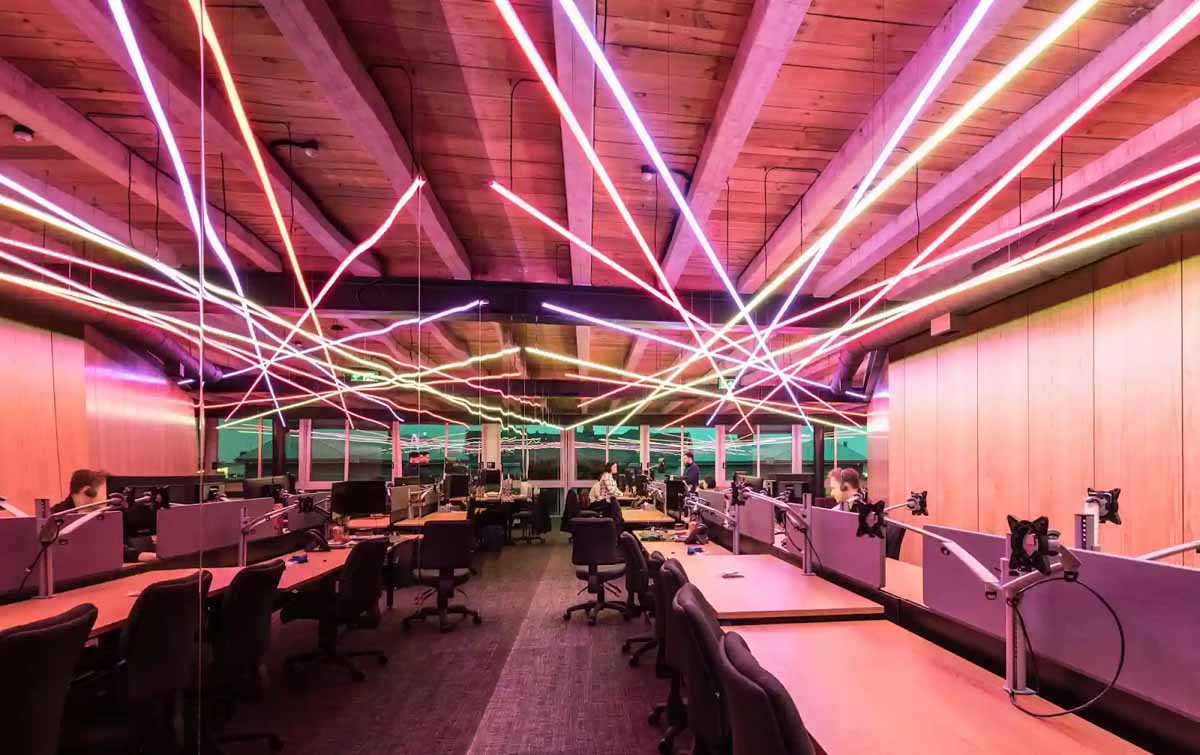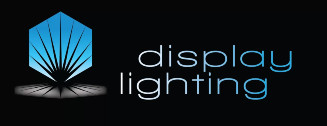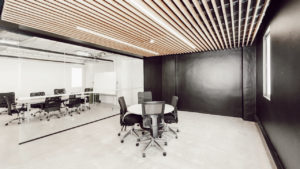If you’re choosing linear lighting for your home, retail space, or commercial project, two names come up repeatedly: LED strip lights and LED neon flex. Both are powerful, energy-efficient lighting solutions, but they shine in different ways. Here’s a clear, no-fluff guide to what separates them and when one makes more sense than the other.
The difference between LED Strip Lights vs LED Neon Flex Lights
LED strip lights are thin, flexible circuit boards fitted with evenly spaced LEDs along their length. They’re typically installed inside aluminium profiles or mounted directly onto surfaces, making them ideal for under-cabinet lighting, shelving, and architectural coves.
LED neon flex, on the other hand, takes strip lighting to the next level. It encases LEDs within a diffused, flexible silicone jacket that produces a continuous, seamless line of light. The result mimics traditional neon but with the efficiency and safety of LED technology.
- Explore LED Strip Lights
- Explore LED Neon Flex

Energy Efficiency and Brightness
Both lighting types use cutting-edge LED technology, so they’re highly energy-efficient, using up to 75% less electricity than halogen or fluorescent lighting.
However, LED strip lights tend to deliver slightly higher brightness levels per metre because the diodes are exposed directly. This makes them great for task lighting or hidden installations where maximum output is needed.
LED neon flex, with its silicone diffusion, softens the light output to create smooth, even illumination. Perfect for accent features, signage, or mood lighting.
For example, Display Lighting’s Smart Neon Flex offers superb brightness while maintaining that modern, continuous glow ideal for both indoor and outdoor designs.
Flexibility and Design Options
This is where LED neon flex really stands out. Its flexible silicone body can bend around curves, signage, and architectural edges, opening creative possibilities for designers. Neon Flex is available in top-bend and side-bend options, allowing different bending directions for custom installations.
LED strip lights, while flexible, are better suited for straight runs or gentle curves. They’re typically installed within aluminium profiles and diffusers to protect the strip and shape the light output.
If your project involves creative lighting outlines or brand signage, go for neon flex. If you’re looking for concealed illumination under benchtops, shelves, or joinery, LED strip lights are usually the better fit.
Lifespan and Maintenance
Both offer long lifespans, typically between 25,000 and 50,000 hours, depending on quality and operating conditions. Because both use LED technology, maintenance is minimal.
However, LED strip lights installed in aluminium profiles tend to stay cooler and last longer since the aluminium acts as a heat sink. Neon flex has the advantage of being fully sealed, offering strong resistance to dust, moisture, and impact.
If your installation is in an exposed or high-moisture area (like an outdoor feature wall or signage), neon flex will handle the elements better.
Application Examples
LED Strip Lights are perfect for:
- Under-cabinet or shelf lighting
- Retail display illumination
- Stairways, coves, and architectural recesses
- Task lighting in kitchens or offices
LED Neon Flex is ideal for:
- Signage and branding outlines
- Outdoor architectural lighting
- Decorative linear features
- Interior design highlights with seamless illumination
Display Lighting supplies both in various colour temperatures, RGB/RGBW options, and dimmable formats, making them suitable for virtually any lighting vision.
Installation and Control
Both systems are low-voltage and require compatible LED drivers or power supplies. LED strip lights typically connect via small soldered joints or clip connectors, while neon flex often uses pre-fitted end caps and connectors for waterproofing.
Pair either with Display Lighting’s LED sensors and control gear for dimming, automation, or smart RGB control:
Because LEDs generate very little heat, they’re safe for cabinetry and enclosed environments, but proper heat management still helps extend lifespan. Aluminium profiles and diffusers also add a professional finish and protect the strip.
Cost and Long-Term Value
Both LED strip lights and neon flex require higher upfront investment than halogen or fluorescent options, but their energy efficiency and long life quickly pay for themselves.
Environmental Benefits
LED strip lights and neon flex both contribute to a smaller carbon footprint. They contain no toxic materials, use less power, and last many times longer than conventional bulbs. That means fewer replacements, less waste, and lower emissions.
If sustainability matters to your brand or project, LED technology is the clear choice.
Which Should You Choose?
Choose LED strip lights if you want:
- High brightness for functional or concealed areas
- Simple, straight-line installations
- Cost-effective, modular solutions
Choose LED neon flex if you want:
- Seamless, continuous lines of light
- Flexible curves or signage effects
- Outdoor or architectural-grade durability
Still unsure which fits your space best? Our Lighting Design Team can help with layout, driver selection, and custom recommendations tailored to your project.
Popular Products for LED Projects
- LED Strip Lights
- LED Neon Flex
- LED Profiles & Diffusers
- LED Power Supplies
- LED Sensors & Control Gear
Need Help with Your Lighting Design?
Talk to our Lighting Design Team, explore the full product range, or contact us for tailored advice.
At Display Lighting, we’re here to help you illuminate your space beautifully with the right LED solution for every application.

